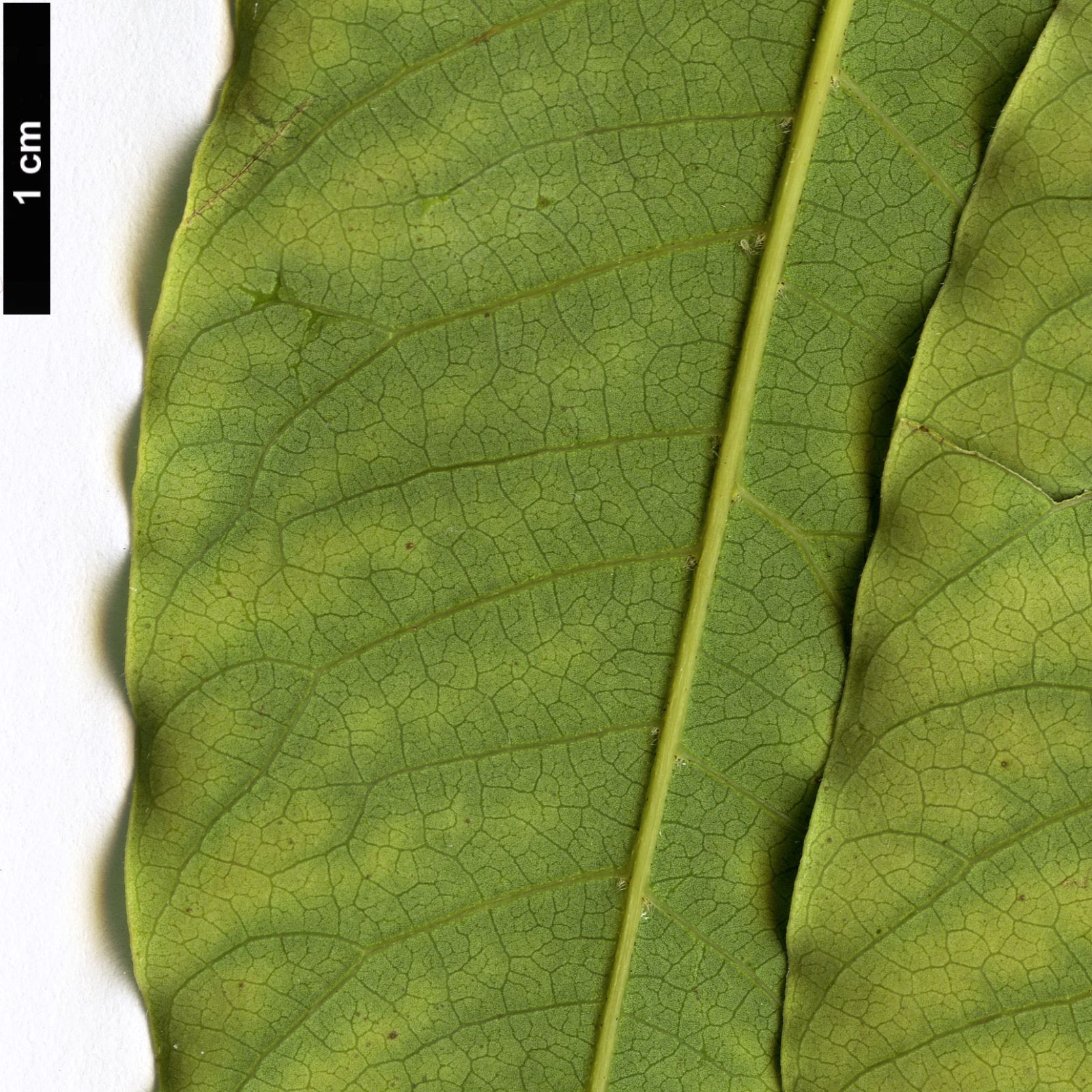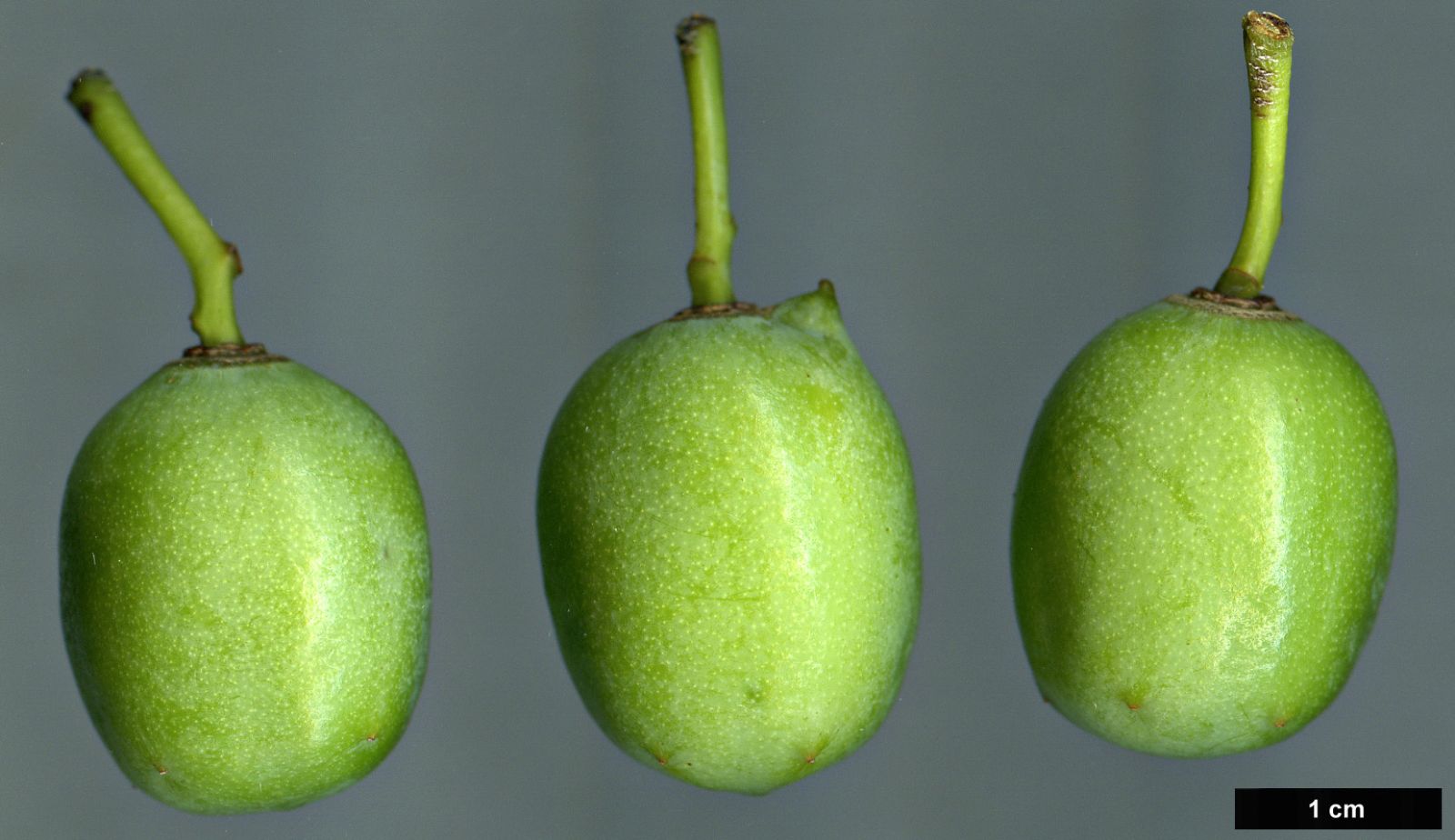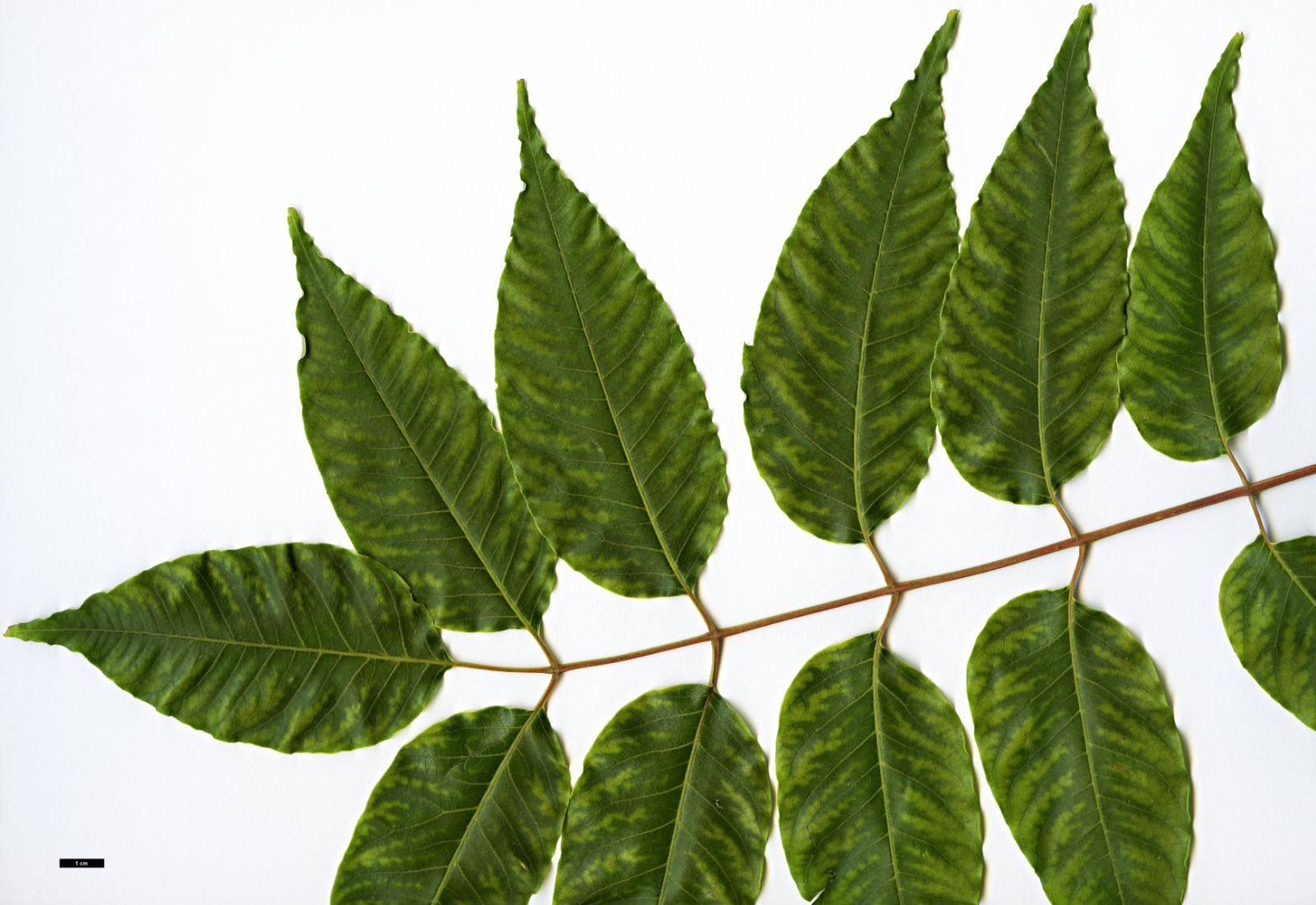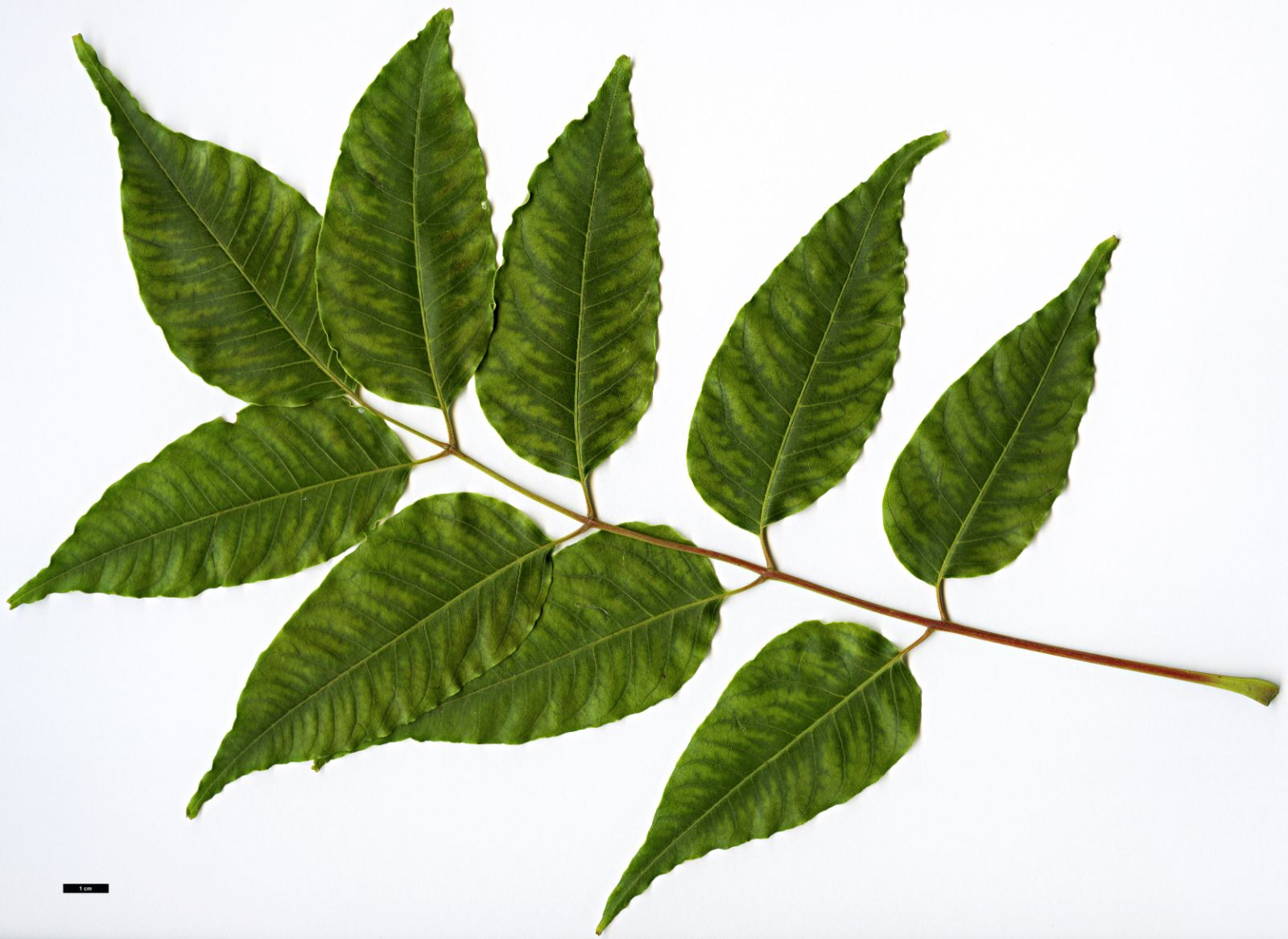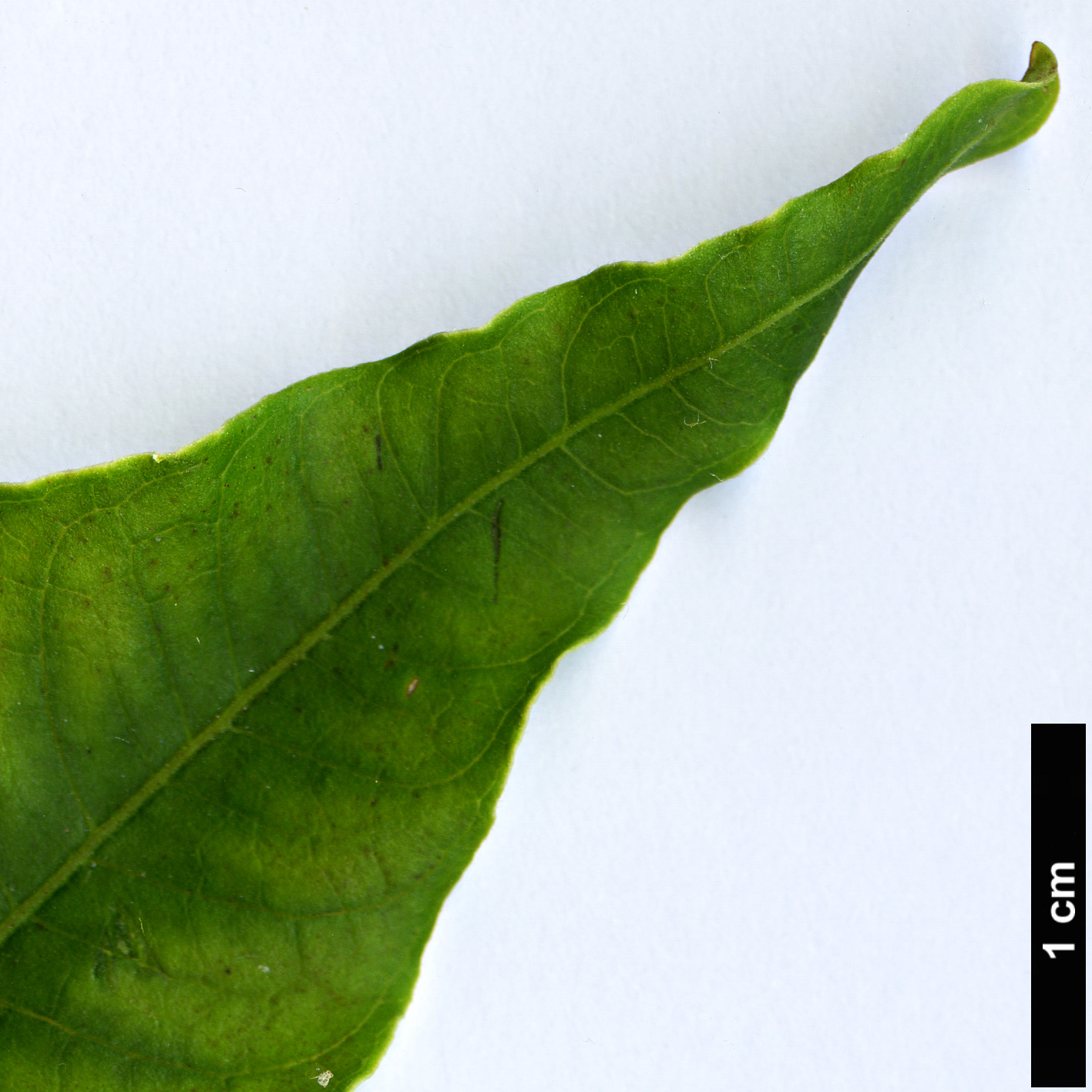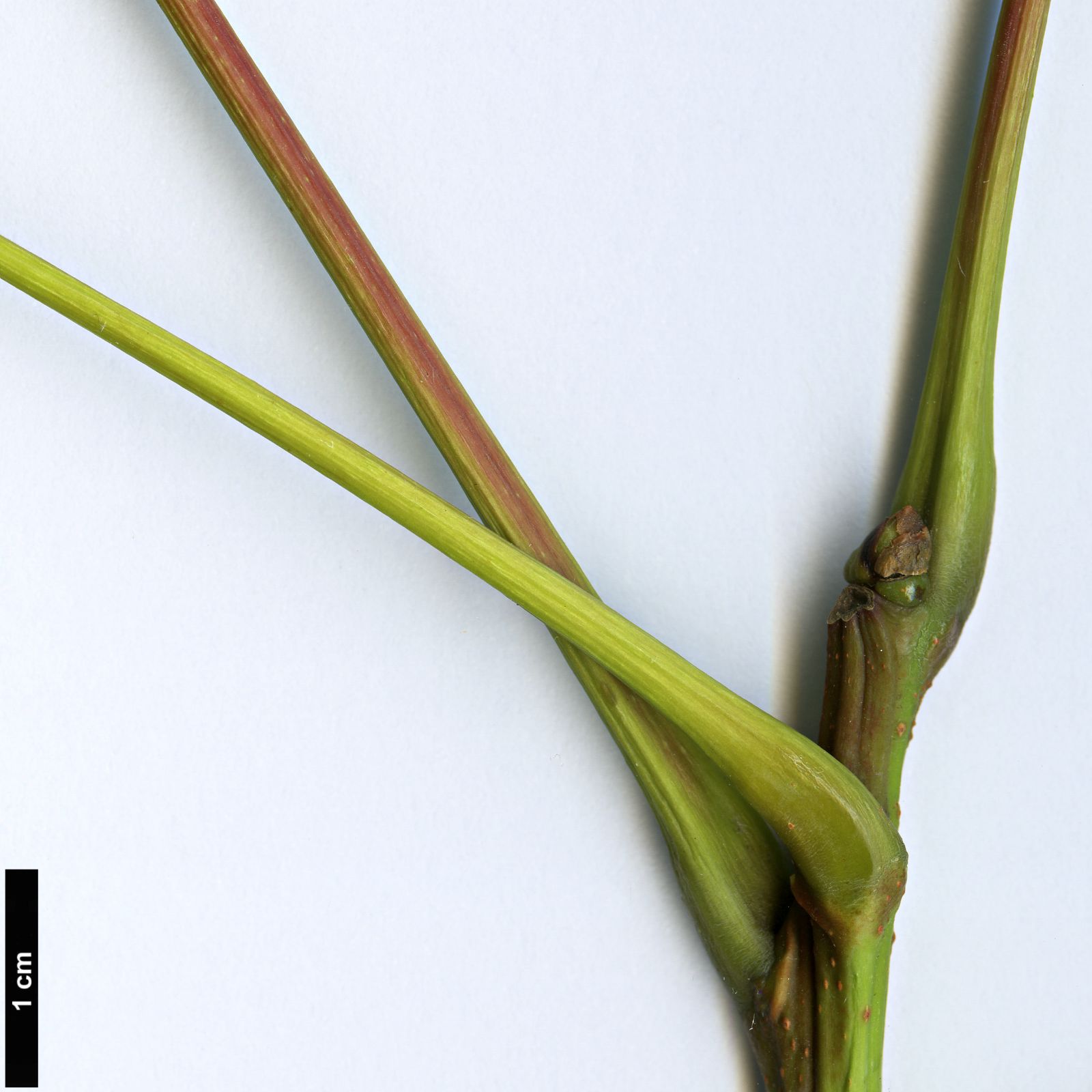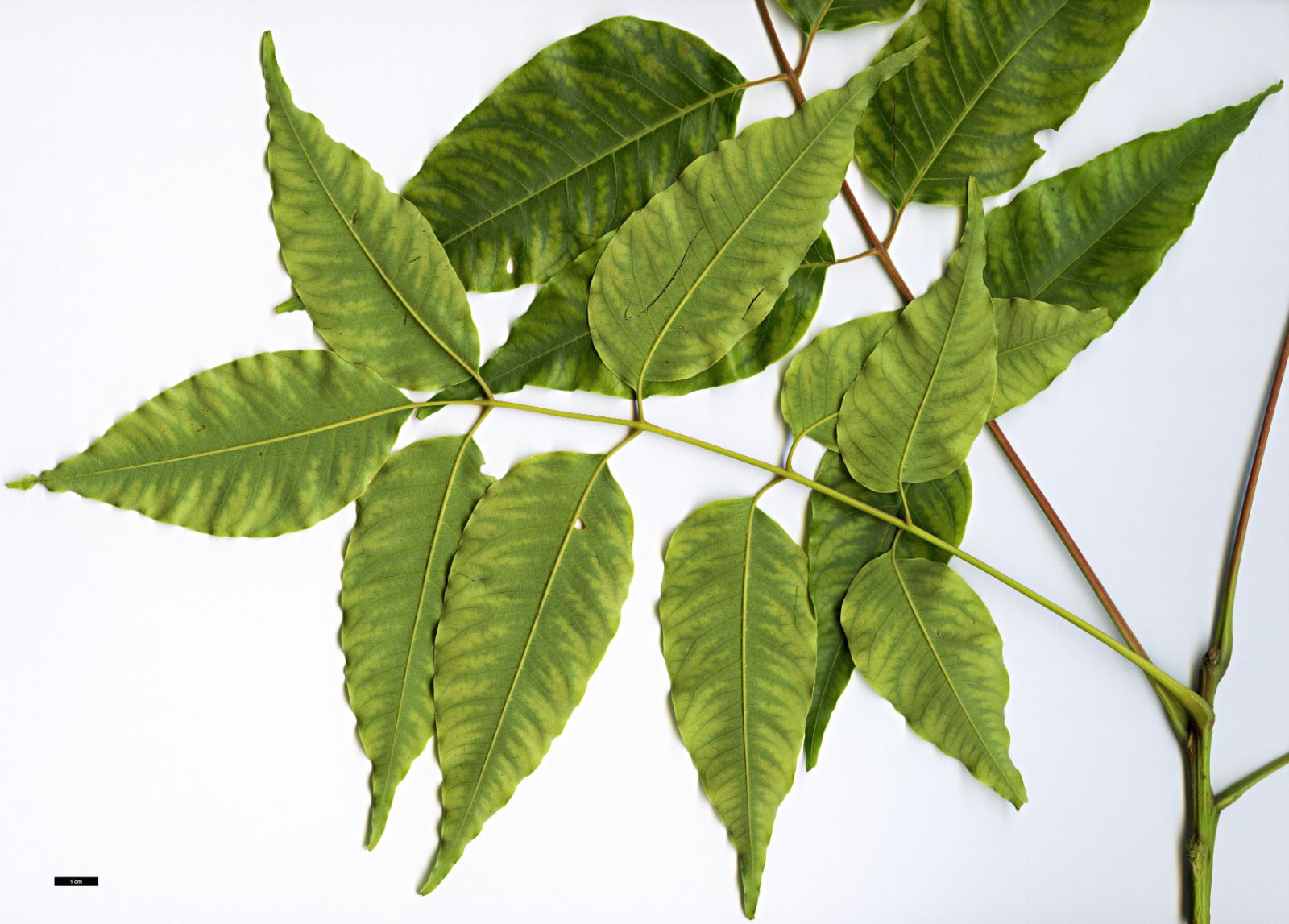Choerospondias axillaris
Credits
Article from New Trees by John Grimshaw & Ross Bayton
Recommended citation
'Choerospondias axillaris' from the website Trees and Shrubs Online (treesandshrubsonline.
Genus
Common Names
- Hog Plum
- Lapsi
Other taxa in genus
Fast-growing tree to 20 m, trunk buttressed, to 0.4 m dbh. Bark greyish brown, exuding a sticky, colourless resin and developing longitudinal splits that peel to reveal a pink inner layer. Sap turns black when exposed to the air. Crown broad and irregular. Leaves deciduous, alternate, fasciculate at the ends of branches, imparipinnate, 30–40 cm long, 4–15 pairs of leaflets; leaflets opposite, 4–12.5 × 2–6 cm, elliptical, upper surface green, lower surface glaucous and yellowish, leaves turning red before falling, margins entire or with some distal undulations and/or notches, apex long and tapering; petiole 0.5–0.8 cm long, somewhat swollen at node; leaf rachis grooved. Flowers yellowish or red, 0.3–0.5 cm diameter, in terminal or axillary panicles (male) or racemes (female); most plants dioecious, though occasional bisexual flowers occur. Fruit a drupe, 1.5 × 2.5 cm diameter, ovoid or globose, red, flesh edible though acidic. Seed with five distinct apical pores. Flowering April to June, fruiting July to September (Vietnam). Kostermans 1991, Hoang et al. 2004. Distribution CHINA: Guangdong (incl. Hainan), Guangxi, Guizhou, Hong Kong, Hubei, Sichuan, Yunnan; INDIA: Assam, Sikkim; JAPAN: Kyushu; LAOS; NEPAL; THAILAND; VIETNAM. Habitat Choerospondias is typically a coloniser of disturbed habitats below 600 m asl, though it reaches 1000 m asl in Sikkim. It prefers deep, wet clay or sandy clay soils. USDA Hardiness Zone 9. Conservation status Not evaluated. Illustration Kostermans 1991, Hudson 2004; NT250. Taxonomic note The Japanese populations have been distinguished as C. axillaris var. japonica (Ohwi) Ohwi.
Although a commonly occurring tree over much of subtropical Asia, Choerospondias axillaris has slipped below the horticultural radar: no references to it will be found in the standard gardening encyclopaedias, and even the internet is silent on its possibilities in horticulture. There are a handful of individuals in cultivation. At Tregrehan it was grown, as Tom Hudson says, ‘as a flier’ (pers. comm. 2005), from seed from the Shanghai Botanic Garden in 1995. So far the ‘flier’ has worked. When seen in 2005 the largest of these trees was 8 m tall and growing vigorously, with new shoots of over 1 m, the stems of which are red. The handsome pinnate leaves are flushed red on emergence, becoming mid-green. The only problem noted so far is that the wood is brittle in strong wind (Hudson 2004). It has not yet flowered. A much older specimen (accessioned 1983) grows against a wall at Glasnevin, but its position adjacent to a roadway has meant that it has been heavily pruned and it is only 2.5 m tall. The fruits of C. axillaris, rich in vitamin C, are greatly valued in Nepal, where it is known as Lapsi and is considered to be an important crop plant (Pieber et al. 2002).

